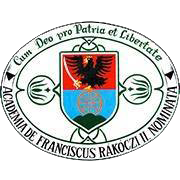Будь ласка, використовуйте цей ідентифікатор, щоб цитувати або посилатися на цей матеріал:
https://dspace.kmf.uz.ua/jspui/handle/123456789/3350| Назва: | Перспективи використання етнокультурних ресурсів Львівської області в шкільній краєзнавчо-туристичній роботі |
| Інші назви: | Prospects for the use of ethno-cultural resources of the Lviv region in school local geography and tourism work |
| Автори: | Мирослав Дністрянський Dnyisztrjanszkij Miroszlav Miroslav Dnistryanskyi Наталія Дністрянська Nataliya Dnistryanska |
| Ключові слова: | етнокультурні ресурси;етнічний туризм;етнографічні райони Львівської області;шкільний туризм |
| Дата публікації: | 2024 |
| Видавництво: | Видавничий дім «Гельветика» |
| Вид документа: | dc.type.study |
| Бібліографічний опис: | In Acta Academiae Beregsasiensis: Geographica et Recreatio. 2024. № 1. c. 5-12. |
| Серія/номер: | ;№ 1. |
| Короткий огляд (реферат): | Резюме. У статті обґрунтовано важливе туристично-краєзнавче значення етнокультурних ресурсів, які розглядаються як поєднання культурних надбань етнічних спільнот і груп. Розкриваючи на прикладах рідної
місцевості взаємопов’язаність різних історично-географічних явищ, поширення етнокультурних ресурсів
відображає важливі особливості географії рідного краю. На практиці етнокультурні ресурси активно використовуються в шкільному туризмі, що сприяє формуванню в учнів навиків самостійного збору та опрацювання географічної інформації.
З огляду на географічне положення та історико-політичні передумови у Львівській області зосереджена велика кількість етнокультурних ресурсів, створених етнографічними групами українського народу
та етнічними меншинами (вірменами, поляками, євреями, німцями), Дослідження показали, що поширення
етнографічних ресурсів Львівської області диференційоване за п’ятьма етнографічними районами, кожен
з яких виділяється своїми особливостями традиційної матеріальної і духовної культури. Водночас пам’ятки
культури, створені в процесі життєдіяльності етнічних меншин, розміщені здебільшого у містах. У статті зроблено висновок, що географія етнокультурних ресурсів розкриває різні етапи заселення й політичного
розвитку Львівської області, що може бути використано при вивченні географії регіону в середній школі.
В розвитку шкільного туризму особливо важливе значення мають такі центри, як Львів, Дрогобич, Самбір,
Стрий, Червоноград, де розміщені краєзнавчі та етнографічні музеї, є різнобічні культурні пам’ятки. Abstract. The article substantiates the important tourism and regional significance of ethno-cultural resources, which are considered as a combination of cultural heritage of ethnic communities and groups. Revealing the interconnectedness of various historical and geographical phenomena on the examples of the native area, the distribution of ethnocultural resources reflects important features of the geography of the native land. In practice, ethno-cultural resources are actively used in school tourism, which contributes to the formation of students skills in independent collection and processing of geographical information. Given the geographical position and historical and political preconditions, a large number of ethno-cultural resources created by ethnographic groups of the Ukrainian people and ethnic minorities (Armenians, Poles, Jews, Germans) are concentrated in the Lviv region. Research has shown that the distribution of ethnographic resources in the Lviv region is differentiated by 5 ethnographic regions, each of which stands out with its own characteristics of traditional material and spiritual culture. At the same time, cultural monuments created in the course of the life of ethnic minorities are mostly located in cities. The article concludes that the geography of ethno-cultural resources reveals different stages of settlement and political development of the Lviv region, which can be used when studying the geography of the region in secondary school. Centers such as Lviv, Drohobych, Sambir, Stryi, Chervonograd, where local history and ethnographic museums are located, as well as versatile cultural attractions, are especially important in the development of school tourism. |
| URI (Уніфікований ідентифікатор ресурсу): | https://dspace.kmf.uz.ua/jspui/handle/123456789/3350 |
| ISSN: | 2786-5843 (Print) 2786-6440 (Online) |
| metadata.dc.rights.uri: | http://creativecommons.org/licenses/by-nc-nd/3.0/us/ |
| Розташовується у зібраннях: | Acta Academiae Beregsasiensis: Geographica et Recreatio |
Файли цього матеріалу:
| Файл | Опис | Розмір | Формат | |
|---|---|---|---|---|
| Dnyisztrjanszkij_M_Dnistryanska_N_Perspektyvy_vykorystannia_etnokulturnykh_resursiv_2024.pdf | In Acta Academiae Beregsasiensis: Geographica et Recreatio. 2024. № 1. c. 5-12. | 507.77 kB | Adobe PDF | Переглянути/Відкрити |
Ліцензія на матеріал: Ліцензія Creative Commons





